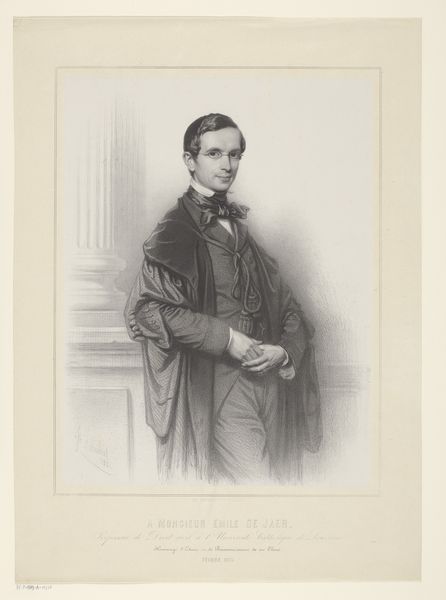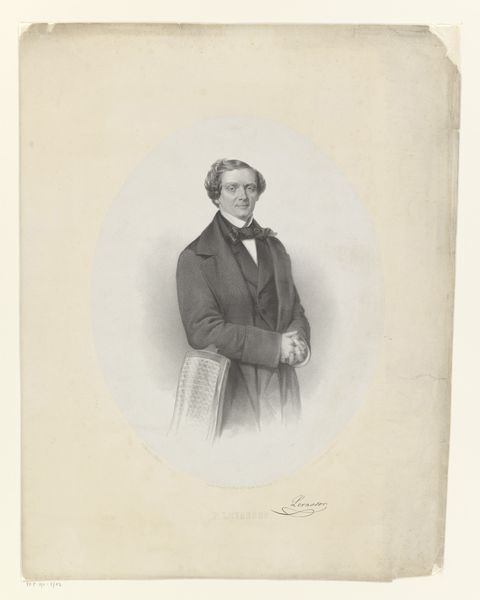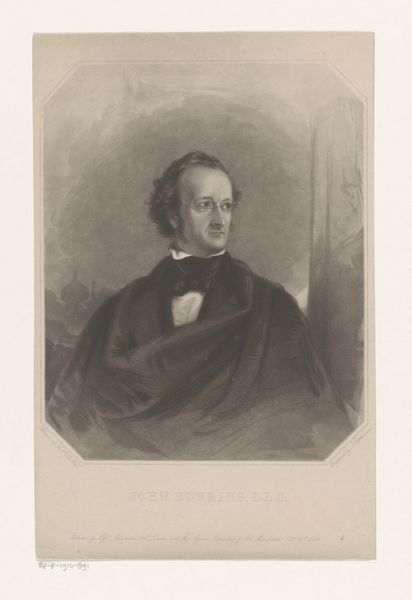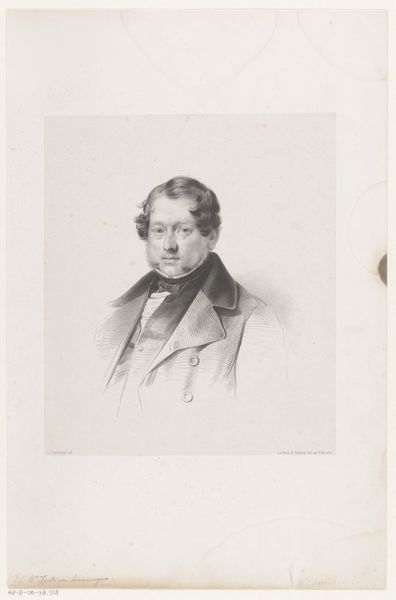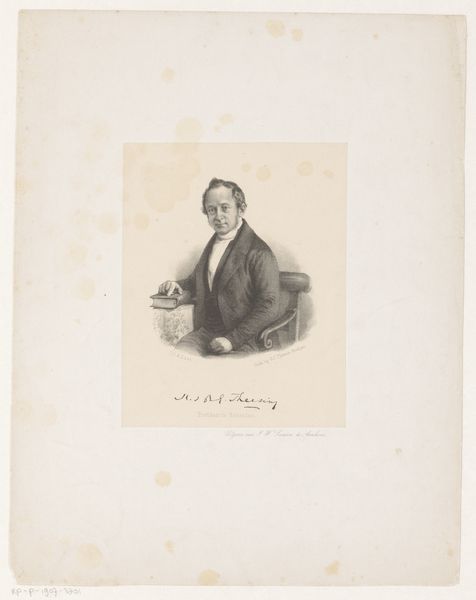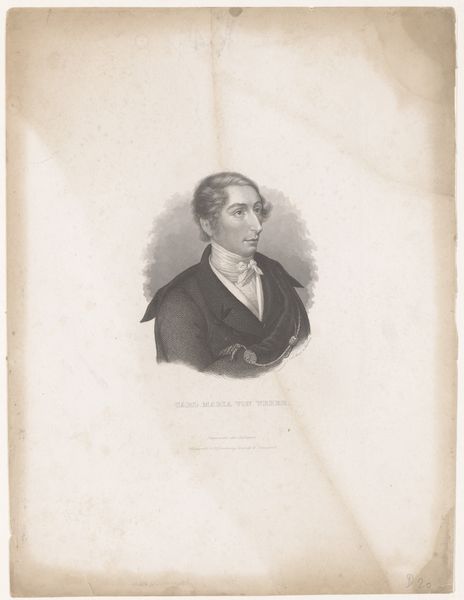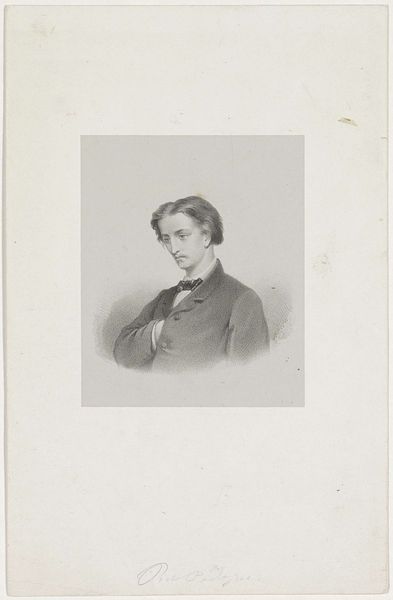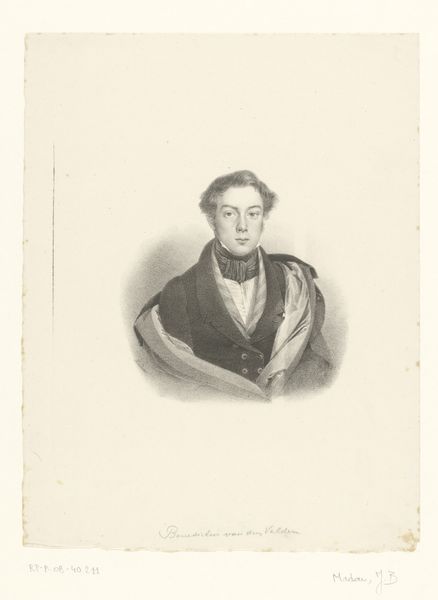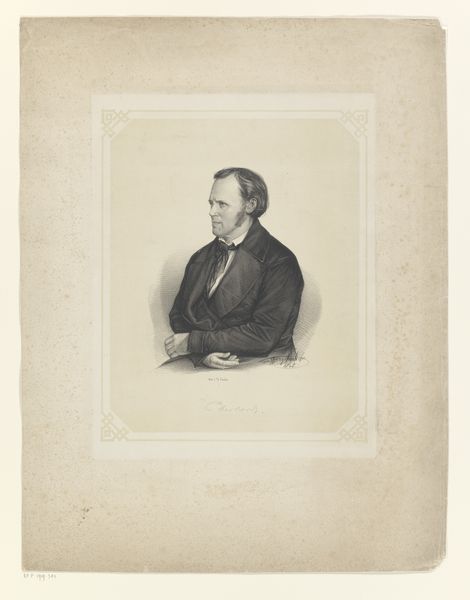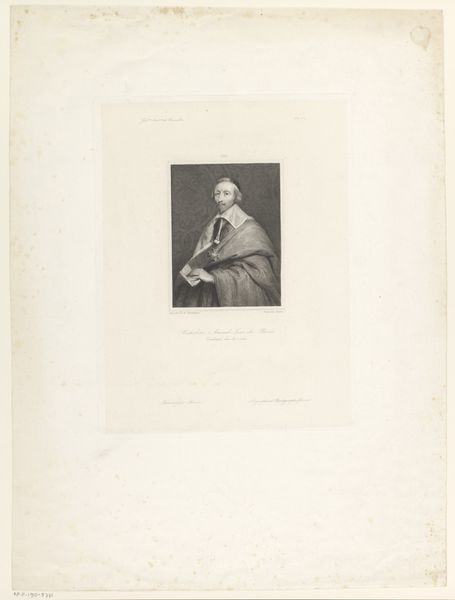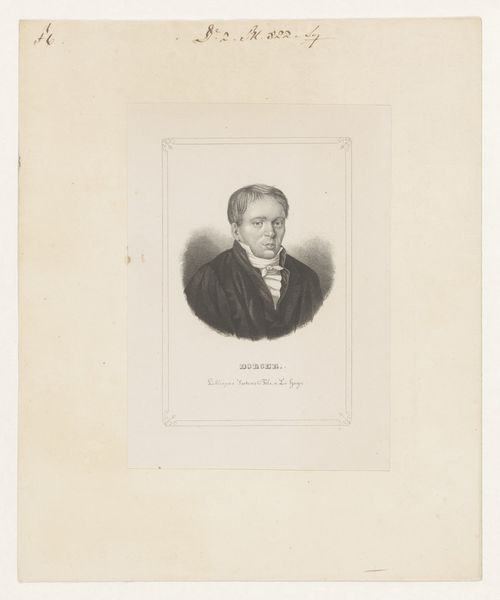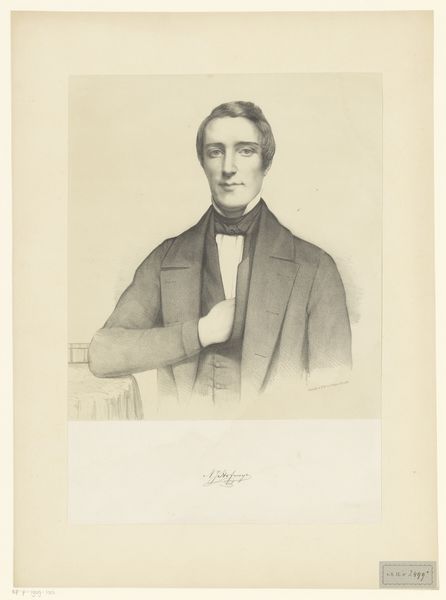
#
pencil drawn
#
photo of handprinted image
#
personal snap photobooth
#
light pencil work
#
wedding photograph
#
photo restoration
#
pencil sketch
#
light coloured
#
pencil drawing
#
framed image
Dimensions: height 440 mm, width 336 mm
Copyright: Rijks Museum: Open Domain
Editor: So, this is "Portret van een onbekende man," created in 1857 by Joseph Schubert, now residing here at the Rijksmuseum. It's quite striking – a monochrome portrait that almost seems to hold its breath. It looks like it has been drawn with pencils and, while simple, it has a lingering elegance. How do you read this portrait? Curator: Indeed. I see a fascinating convergence of societal aspirations and individual identity. Look at the crest – a subtle declaration of lineage, perhaps even ambition. But juxtapose that with the soft, almost melancholic gaze of the subject. What unspoken stories might lie there? The symbols whisper of public life, status, while the face hints at a private, perhaps more complicated narrative. Do you notice the fall of light, how it seems to illuminate his face yet leave the trappings of status slightly in shadow? Editor: Yes, I see that now! The way the light falls almost feels like a conscious choice to emphasize his individuality over his status. Does the man’s attire give any clues about his cultural role at that time? Curator: Certainly. The drape of the fabric, the cut of the coat, each element is carefully considered to present a specific image. But more than that, think about the very act of commissioning a portrait. What does it mean to want your image preserved for posterity? This man seems caught between eras, projecting an image that both conforms and subtly questions established norms. What feeling does the portrait trigger in you? Editor: I find it strangely moving, the way he seems to both present himself and hold something back. It makes me curious about what was happening in Europe then. Curator: Precisely. The visual cues serve as windows into a wider cultural narrative. Consider also how this image would be understood and remembered decades after its creation, an exercise in memory and visual history. Editor: It is almost like a time capsule, now that I understand the visual language. Thanks for explaining it all. Curator: My pleasure! It is exciting to find that past in the present.
Comments
No comments
Be the first to comment and join the conversation on the ultimate creative platform.
